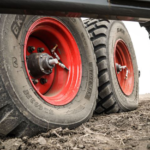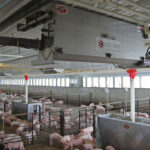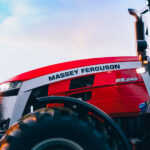A Crop With Punch
Horseradish thrives in deep, sandy soil, the kind you find in America’s bottomlands, including third-generation farmer Barry McMillin’s 1,200 acres near Caseyville, Ill. “German immigrants lived in this area,” McMillin says, “so it’s a tradition to grow horseradish here.” Today,...
A Crop With Punch
Horseradish thrives in deep, sandy soil, the kind you find in America’s bottomlands, including third-generation farmer Barry McMillin’s 1,200 acres near Caseyville, Ill. “German immigrants lived in this area,” McMillin says, “so it’s a tradition to grow horseradish here.” Today,...Horseradish thrives in deep, sandy soil, the kind you find in America’s bottomlands, including third-generation farmer Barry McMillin’s 1,200 acres near Caseyville, Ill.
“German immigrants lived in this area,” McMillin says, “so it’s a tradition to grow horseradish here.” Today, he’s one of about a dozen larger-scale growers left in North America, because raising and harvesting the pungent roots, which belong to the cabbage family, is so labor-intensive.
“It’s backbreaking work,” he says of growing the plants on his land, Bluff View Farm. “You almost have to be born into it, because not everybody has the tools or the wherewithal to attack a crop like this. It’s not like corn or soybeans, and there’s not a lot of technical data or research on ‘how-to.’”
For McMillin, planting typically starts in March and April, but wet weather hampered efforts last year and planting wasn’t concluded until the first of June. “We like to have them in the ground by May 1, ideally, to have your best yield. Horseradish is similar to corn in that respect. You don’t want to plant too late because it starts taking off yield right away,” he says.
Planting is done with broken lateral roots and branch roots from selected stock. McMillin plants the roots in 36-inch rows, 18 to 24 inches apart, and hills them up like potatoes.
When he fertilizes, McMillin uses potash, phosphate and some nitrogen. “We’re heavier on potash than any other soil amendment. It’s a fertilizing program similar to what’s used for soybeans.”
During the growing season, horseradish foliage can reach 3 feet tall, and it’s hard to get off until there’s a heavy frost. McMillin hasn’t had much luck using the tops as cattle feed. “The tops have a pungent smell, like the roots, so it’s probably just not tasty to the cattle.”
With so few growers, there’s not a lot of buyers for horseradish harvesting equipment, so McMillin and other producers often assemble their own, modifying tools and equipment used for other crops. “We use a converted potato harvester,” he says. “But we have to beef up the frame because we dig 16 inches down—much deeper than potato farmers—and have heavier soils.”
McMillin says horseradish growers like his father used a bottom plow and harvested the roots with a potato fork to load onto wagons. Today, McMillin uses forklifts and two Massey Ferguson® 4243 tractors.
“We need a 150-HP tractor to pull the two-row potato harvester we modified. Alongside the digger, we have a dump cart that takes 80 to 100 HP. It catches the horseradish from the harvester. We elevate the cart to dump our loads over the side of the truck, so we don’t have to drive the truck through the field.”
The Massey Ferguson tractors provide the power McMillin needs. “I’ve had very good luck with Massey Ferguson equipment. I’ve owned at least four tractors and have leased some. They’ve been reliable, good tractors.”
Adds McMillin about his Massey Ferguson equipment: “I realize how much innovation they put into tractors. A lot of other companies use improvements that Massey came up with. They’ve always been a leader. It’s a good brand.”
Read the fully story at http://www.myfarmlife.com/features/horseradish-is-a-crop-with-punch/.




